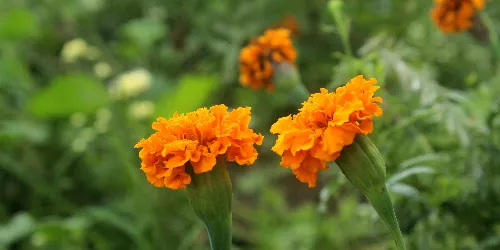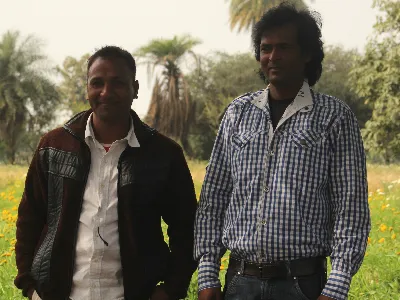Mirzapur celebrates eco-friendly Diwali in its own way
Mirzapur, a village situated 20 km away from Indore city, celebrates Diwali by brightening up the houses in the entire district in its own way. The village supplies 80% of the flowers during the season to Indore, Dhar, Dewas, Khandwa, Surat, and other nearby towns. Thus, Diwali in Mirzapur is not a vacation but a celebration of their hard work. During this time, even the smallest farmer in the village gets a phenomenal pricing for his flower yield.

The flowers, mostly the white Sevanthi and Genda, are sold at Rs. 120–150 per kg around Diwali season. “We are able to sell at Rs. 10,000 per quintal and each farmer in the village has a minimum of two quintals per day. Though this spurt in income is limited to a few days around Diwali, it gives us immense satisfaction,” shares Rajendra Malviya who owns four acres of land. The flowers are sold at Rs. 30–40 per kg during the rest of the year.

Mirzapur mainly grows Sevanthi; Bijli; Genda and Nauranga. “Bijli and white Sevanthi look very similar but the former blooms only during monsoon and winter seasons. During Diwali, Sevanthi and Genda are in high demand because of their ritual significance,” informs a housewife, Mamta Malviya, who helps her husband and his brother’s families, especially during the festive season. These flowers can remain fresh for four days, if kept away from water. “We sell these flowers at the Mandi in Indore. There are bulk buyers from Surat and Gwalior, who then carry them in loading vehicles to their cities. By the time they reach the hands of the end customer, they are at least three days old. However, they can still last for another two days,” she adds.
An educated and prosperous village
“More than 80% of the population in Mirzapur owns land between two to eight acres. It’s hard to find labourers for flower picking as most of us are farmers. So we get our wives, children, and relatives to help us,” says Rajendra. However, at times the children are unable to help them as they have school. “Every child in our village goes to school. We make sure our daughters don’t miss school,” says another farmer Rajesh Patel. “I have to stay home to help my son for his homework as he goes to a private English medium school nearby,” adds Mamta who has studied until class XII. The government school in Mirzapur has around 150 children including girls, while the Anganwadi has 70. Moreover, many children have succeeded in securing admissions on free of cost in private English schools as part of the government scheme under Sarva Shiksha Abhiyaan.

So how much is a farmer able to make annually through flower cultivation here? “We are like all the other farmers in the country. We are dependent on the weather, so the income is never fixed. We have instances of storms or just strong winds during monsoon that severely affects the yield. There’s a certain fungus that infects some flowers and it has no treatment available in India,” says Vinod Prajapat who works closely with the village Panchayat.
“As everyone here is a farmer, you will find one member of each family engaged in other occupations such as real estate, government job, and even banking and engineering. Thus, whenever the flower cultivation doesn’t yield much, we have a back up,” he says. Some of the youth in the village are studying engineering, commerce, dentistry and banking. “We want our children to acquire skills that may be used in future for the benefit of our village,” says Sarpanch Leela Bai Patel. Most homes in the village are made of concrete , and every other household owns a car and two wheelers.
“But we are rich in culture too. We have a tradition of Padwa, a ritual of greeting. We visit each others’ houses on this day to exchange Diwali wishes a day on advance. We live a healthy life as we all work in the farms,” she says.
A thing of beauty
Vegetables such as brinjal, cauliflower, etc., are grown in the spare land for food supplies to all its 3,000 inhabitants. Since the flowers are grown based on the season, it results into a crop rotation.
“Flowers like orchids and roses can get us more money but they are problematic. They attract rats and that would be an added challenge. So we stick to these four varieties of flowers,” says Vinod.
“While I want my children to get an education, I also wish they take up flower cultivation as their occupation. They can bring about a lot of change in marketing the yield. If done well, there’s nothing like this business. It gives us happiness and spreads beauty,” shares Rajendra.
Fun fact: There are three towns named Mirzapur. Apart from the one in Indore, there’s one Mirzapur is Uttar Pradesh and one in Pakistan. These three towns have a common folklore behind the name, believes Mirza Ghalib, a noted poet, who had halted at the village during one of his journeys.







